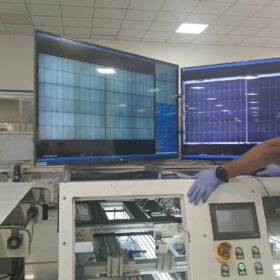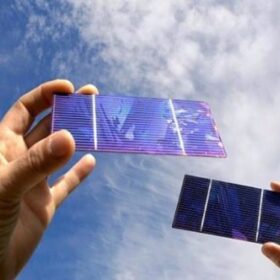Integrating green hydrogen in steel production
Transitioning the steel industry to green hydrogen will be a complex journey, but the groundwork is already being laid. India’s pilot projects, along with sustained investment in renewable energy and hydrogen infrastructure, create a strong foundation for a cleaner future.
Lithuania bans remote Chinese access to solar, wind, storage devices
Lithuania has decided to tighten its cybersecurity laws, banning manufacturers from countries deemed national security threats, including China, from remotely accessing management systems of solar, wind, and storage facilities. The European Solar Manufacturing Council has backed the move.
Looming Trump tariffs drive rush on US imports, push shipping costs higher
Freight costs are rising as businesses rush to import goods ahead of higher tariffs promised by US President-elect Donald Trump on Chinese and European products.
India expected to hit 132 GW of installed solar capacity by March 2026
ICRA expects India to add 22 GW of new solar power generation capacity in FY 2025 and 27.5 GW in FY 2026, taking its cumulative installed PV capacity to 131.5 GW from 82 GW as of March 31, 2024.
“Solar storage will be a mainstream solution, fully integrated into energy strategies across industries”
Shantanu Mishra, head-business development, Amplus Solar, speaks to pv magazine about the C&I battery energy storage systems (BESS) market in India, key barriers and emerging models.
AMPIN, Danish investor CIP expand partnership for renewable energy projects in India
AMPIN Energy Transition and Copenhagen Infrastructure Partners have expanded their existing collaboration with $300 million joint equity investments to enable the addition of 2 GWp of renewable energy projects across India. This new partnership along with the existing one will create a $2.7-3 billion renewable energy asset base in India.
Longi unveils heterojunction BC solar cells with 27.3% efficiency
The Chinese manufacturer said the device is based on dense passivating contacts that reduce parasitic light absorption and improve passivation. It used a streamlined manufacturing technique that is reportedly about one-third more effective than TOPCon mainstream technology.
China cuts export tax rebate for solar products
China has reduced the export tax rebate for solar products, lowering refunded taxes for Chinese PV exporters and eating into their profit margins. The move might force some companies to increase export prices to mitigate potential financial losses.
Waaree Energies Q2 profit grows 17% YoY
Waaree Energies has reported a total income of INR 3,663.46 crore and net profit (profit after tax) of INR 375.66 crore for the second quarter of FY 2024-25.
Hybrid perovskite-organic solar cell reaches record-breaking efficiency of 24%
Korean scientists have fabricated a perovskite-organic solar cell with a uniform sub-nanometer dipole layer. The device recorded a power conversion efficiency of 24% under testing, a new record for lead-based hybrid perovskite-organic solar cells.















